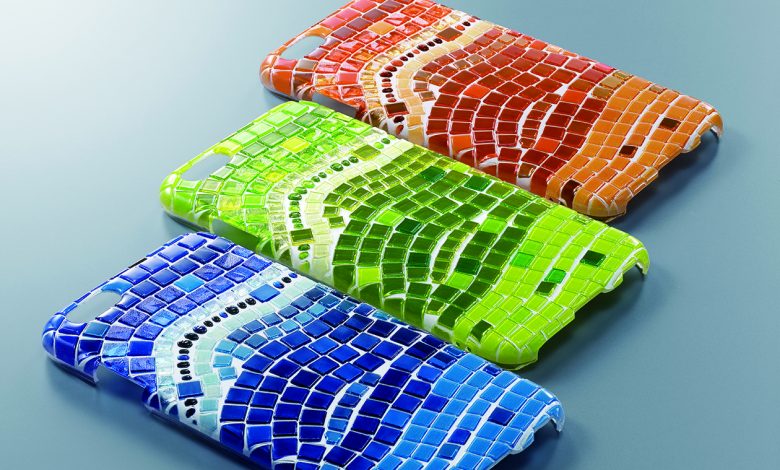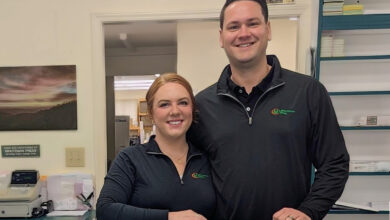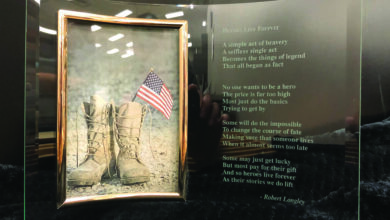Printer Profitability: Getting the Most Out of Your Wide-Format Printer
Profitable tips to help keep sign business in the black
A good wide-format printer, much like a swiss army knife, can be used for a wide range of applications. This is great news for your sign shop, especially if you are looking for new ways to get the most out of your wide-format equipment. One of the keys to getting the most out of your investment is having enough jobs in the hopper to keep your printer arsenal constantly working for you. It’s all about “feeding the beast”.
To feed the beast, you need to implement strategies to keep your printers printing, but how? Do you simply squeeze in lots of small jobs between large ones? What are the value and drawbacks of running double shifts? Keeping the printers well maintained with the least possible downtime is another key issue. How do you keep them maintained and running in tip-top form?
Boning up on all the types of applications your printers are capable of so you can offer more print options from your clients is another benefit. What kinds of “high-value” things you can offer with your printer?
We spoke with a number of the leading suppliers and polled them about some of the most important points to consider to help maximize the profitability of your printer. Whether you’re looking for some helpful tips or just want to add a few new print options for your business, you’re sure to find something beneficial from this primer.
Keeping your printers printing
Kitt Jones, applications specialist at Roland DGA, says the single best way to feed your machine is to sell, sell, sell!
“It’s important to understand what type of projects will yield the highest profits and keep your printer busy,” he says. “One of the most undersold applications is interior wall graphics. Such jobs are highly profitable and, because they involve flat surfaces, and they are much easier to install than vehicle wraps. In addition, they have the potential to involve significant square footage when it comes to material. Most sign shops today focus on vehicle wraps and, while this is a great application, these types of jobs can be difficult for a young sign shop to handle,” he explains.
Jones adds that it really comes down to the installation, which can either make or break the quality of any kind of wrap. “To find clients for wall wraps, a shop should first look at its current clientele, as these clients will be the easiest to ‘harvest.’ Interior decorators, architects, contractors are great prospects, as are museums and activity centers. Be sure to wrap your own lobby, too, as this will make for a great conversation starter and help you promote your services.”
Dan Johansen, senior manager, Wide Format, Commercial & Industrial Printing Business Group, Ricoh USA, says that there are many schools of thought regarding how best to keep a printer printing. He points out that many shops prioritize the jobs that they do throughout the production day based on the timeline and the due date of the work, triaging around making deadlines as the top priority. “This can be less productive, however, because it requires a print operator to change substrates frequently for different jobs. Some printers choose to knock out multiple jobs that use the same substrate all at once or back-to-back, so they don’t have to change the same substrate out and then back in again. In fast-turn shops where that level of planning can be a luxury, printers can reduce waste by holding on to unused portions of substrate that can be used for smaller jobs to be run between larger jobs.”
Johansen says that if a shop has enough job volume to justify more than a single shift, obviously a second shift can be more cost effective than new equipment in many cases, but not all. “Before deciding between adding a shift or adding equipment to keep up with demand, work out the cost of the labor you’re considering versus the total cost of ownership (TCO) of the equipment you’re considering. There’s no one-size-fits-all answer.”
Michael Maxwell, senior manager at Mimaki USA, adds that proper planning at the beginning of the production week is a must. “Looking at the different media to be printed on and the delivery times will help minimize downtime. As an example, queuing up all jobs for vinyl that will be laminated and potentially cut allows operators to load the printer and start sending files. Most production bottlenecks are manual processes, such as loading and unloading media, setting head heights, and adjusting settings. By grouping jobs together, operators are able to focus on other tasks.”
Mark Rugen, director of product marketing and education at Mutoh America, says that between paid jobs, it’s time to do some giveaways and kits. “By ‘giveaways’ we mean samples that can be used to market your services; creating small items that show off your printer’s capabilities. This might include a luggage tag or iPhone cover for a desktop UV-LED printer like the Mutoh VJ626. By ‘kits’ I mean, items that you make ahead of time for sale for walk-in customers. They may be waiting for a job they brought in, but while you are packaging it, why not create a stand loaded with some cool ‘for sale’ kits like an iPhone cover or maybe a vehicle window item.”
Learning about applications
“Using your imagination is great, but sometimes you might just need some application ideas,” says Rugen. “We recommend checking out Pinterest or other online services where other shops love to post their ideas. Mutoh has even started a new website called www.thinkmutoh.com where we post ‘How-To’ videos to help users learn how to use Mutoh printers to get jobs done,” he adds.
Maxwell notes that applications are mostly tied to the ink technology and not the printer itself. “It is always good practice to do research on ink and media compatibility prior to producing a job. Many media manufacturers will offer multi-use media and some will even offer more specialized substrates. Inks, such as solvent and UV-LED, are more prevalent in the market and therefore offer more options and information. Other inks, such as latex, may be more limited in media compatibility and require additional testing and verification.”
He adds that ultimately, the manufacturer of the media and the distributor that sells it should be the first place to explore other application options based on the ink and platform of the printer, i.e. flatbed versus roll-to-roll.”
“If you want to know how far you can push boundaries in your print environment, I cannot recommend highly enough having regular meetings with your substrate providers,” says Johansen. “These people tend to be on the cutting edge of new substrates and applications available in the wide-format market. Substrate providers are always eager to highlight new revenue opportunities or new products you could offer your customers because that means selling those substrates to you. They’d love to establish themselves as a trusted partner you can come back to, so they’re even further incentivized to enhance your portfolio and help you succeed.”
Jones agrees that a good place to start is your inkjet dealer or media vendor. “If you’re a Roland owner, and you’re not currently working with an authorized dealer, you can get a referral by contacting a Roland representative.”
He says that dealers have extensive knowledge of the various trends/markets, what’s selling well, and what’s happening in the industry, so whether the job is a wall wrap, vehicle wrap, backlit, or a UV application, the reseller should be able to provide valuable insights. “Roland DGA also offers a wealth of application ideas and expert tips in the free webinars, workflow videos, blogs, and other resources available at the www.rolanddga.com website.”
Jones adds if you are looking to add new applications and business opportunities to your current product offerings, the UV market is a great place to start. “Roland’s innovative VersaUV series printers, such as those within the LEF, LEJ, and LEC series, offer incredible potential for growth and profits. All of our VersaUV models allow users to incorporate unique textural and dimensional effects into their prints with gloss and white inks.”
“High-value” options
Maxwell says that the most high-value products typically come from UV-cure printer technologies, given the expansiveness of its capabilities. “With this technology, virtually any surface is printable. This opens up a world of creative customized products that are easy to produce and very profitable. Additionally, newer developments in how the ink can be layered allows for higher-value applications, such as backlits, front/back signage, P.O.P. displays, and transformative images. With Mimaki UV-LED printers, any print service providers looking to expand beyond the usual applications without losing those capabilities can do so easily and offer diversification.”
“I think the biggest value that Roland provides to its customers are solutions,” says Jones. “This starts with VersaWorks and VersaWorks Dual software, these RIPs incorporate a host of great tools for maximizing efficiency, convenience, and productivity, including automation and hot folders, variable data control, and other great features. For UV-cure and eco-solvent white ink users, the ability to generate gloss or white plate on the fly makes adding either to your file for print a one-click operation.
“The UV market is growing rapidly,” continues Jones. “Our ADA Braille solutions, along with the ability of our printers to add multiple layered textures, are opening up lucrative new revenue streams for users. Being able to print on leather, acrylic, metal, stone-virtually any type of media or objects-opens the doorway for inspired entrepreneurs to excel, enter different markets, and cultivate new business opportunities.”
Johansen says whether you’re printing roll-to-roll or on rigid material, diversity of substrates opens up opportunities for unique applications that not only create very compelling graphics for the print buyer, but they also create an opportunity for the printer to sell higher-value-and subsequently higher-margin-products.
“For example, effect-based printing, utilizing multiple layers of ink, or unique substrates, such as aluminum panels or acrylics, can create high-impact, high-margin graphics,” Johansen says. “Health clubs often love the look of direct print onto brushed aluminum panels because stark letters against aluminum projects strength, a perfect fit for this industry segment. Retailers, meanwhile, might look to enhance their messaging with other stand-out applications, such as day/night backlits, where the image changes based on light conditions, allowing signage to transform right in front of your audience’s eyes,” he concludes.










